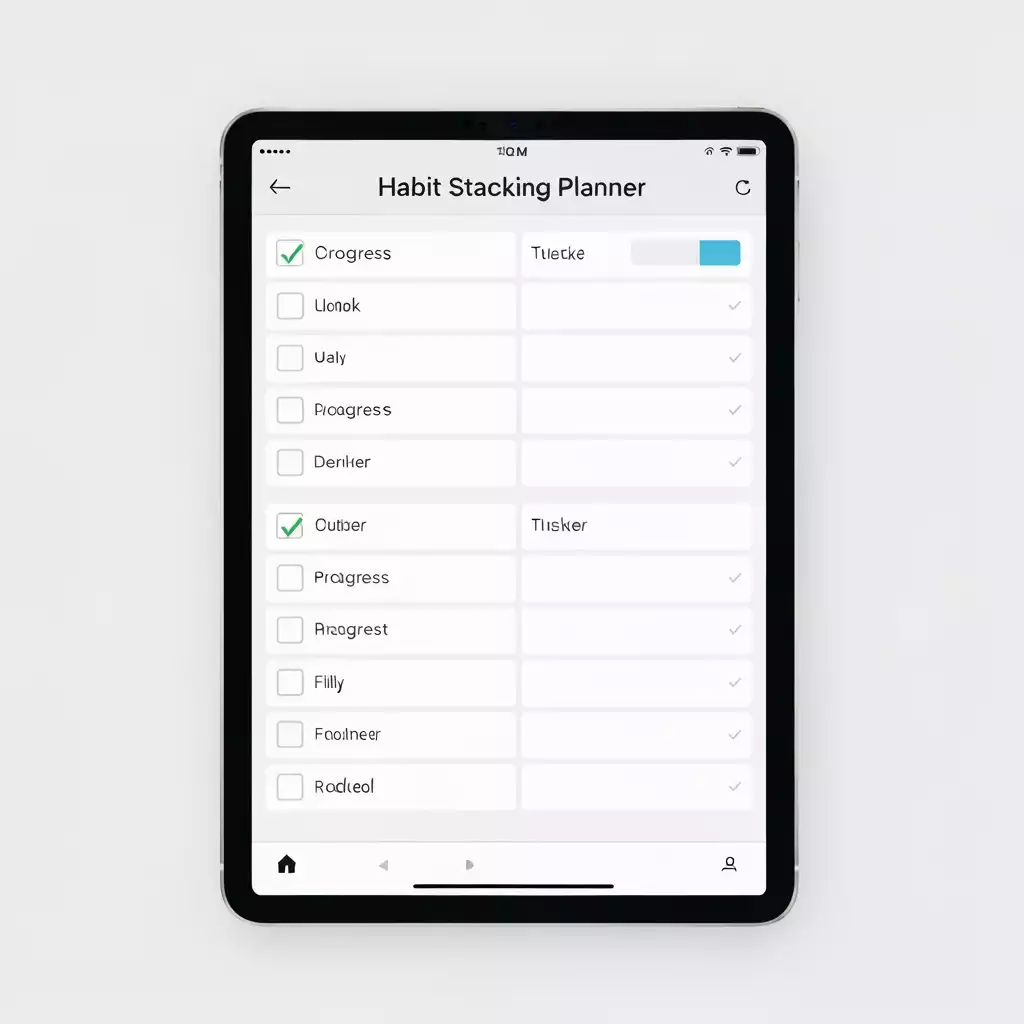What if the secret to building lasting habits lies in the simple act of stacking them? By connecting new behaviors to those you already perform daily, you can create powerful routines that stick. Dive into the world of habit stacking and discover how this technique can transform your approach to personal growth.
What You Will Learn
- Habit stacking involves linking a new habit to an existing one for easier adoption.
- Leveraging neural pathways makes it simpler to form new habits over time.
- The release of dopamine during habit completion reinforces positive behavior.
- Habit stacking can enhance productivity, improve mental health, and create lasting change.
- Regular reflection and journaling can help track progress and adjust habits effectively.
Understanding Habit Stacking: A Practical Definition
Have you ever wondered how some people seem to effortlessly build new habits? Habit stacking is a technique that can help you do just that! It allows you to build new habits by linking them to existing ones, making the process smoother and more effective.
In essence, habit stacking is about taking a habit you already do regularly and stacking a new habit on top of it. This works because our brains are wired to form connections between activities, making it easier to adopt new behaviors when they are tied to familiar ones. To learn more, you can explore resources like this article on what habit stacking is and why it’s important.

What Is Habit Stacking and How Does It Work?
At its core, habit stacking is a simple method to enhance habit formation. By associating a new habit with a routine you already have, you’re leveraging the cues and rewards already established in your brain. This creates a seamless transition from the old habit to the new one.
- Identify a current habit: Choose something you do daily.
- Add a new habit: Select a new behavior you want to incorporate.
- Link them together: Attach the new habit to the existing one.
For example, if you always have your morning coffee, you could stack a new habit of doing five minutes of stretching right after you finish your cup. This way, the coffee becomes a cue for your new stretching routine! You can find further insights into this approach from institutions like Salisbury University’s take on habit stacking.
The Science Behind Habit Stacking: Neural Pathways and Dopamine
Understanding the science behind habit stacking can empower us to use it effectively. Our brains operate on neural pathways that facilitate the formation of habits. When you repeat a behavior, these pathways strengthen, making the action easier over time.
- Dopamine release: Completing a habit releases dopamine, a feel-good chemical that reinforces the behavior.
- Neural connections: The more you stack habits, the stronger the connections become.
- Automaticity: With practice, these habits can become automatic, requiring less conscious effort.
This means that each time you successfully perform your stacked habits, you’re not only reinforcing the connection in your brain but also experiencing a boost of motivation from the dopamine released. It’s a win-win! Research published in sources like PMC NCBI further elaborates on the neurological underpinnings of habit formation and reinforcement.
Pro Tip
Did you know? Visual reminders can significantly enhance your habit stacking success. Consider placing sticky notes in visible areas, setting alarms on your phone, or using apps that remind you of your new stacked habits. These cues serve as powerful nudges, helping to solidify your new behaviors and ensure consistency.
Recap of Habit Stacking Benefits and Applications
As we’ve explored throughout this article, habit stacking offers a fantastic opportunity to enhance our daily lives. By building new habits on existing ones, we can streamline our routines and cultivate lasting changes. The benefits of habit stacking are not just theoretical; they have real-world applications that can transform how we approach our goals.
Some of the key benefits include increased productivity, improved mental health, and the ability to seamlessly incorporate new habits into our lives. Let’s summarize these benefits to solidify our understanding:
- Enhances routine formation: Makes it easier to stick to new habits.
- Supports mental well-being: Boosts mood and reduces stress.
- Increases productivity: Aligns daily habits with personal and professional goals.
- Utilizes positive reinforcement: Encourages consistency through rewards.
Encouragement to Start Your Habit Stacking Journey
Now that you’re aware of the numerous benefits, it’s time to take action! I encourage you to start your own habit stacking journey. Begin by identifying one or two existing habits you can leverage to introduce new behaviors. Whether it’s stacking a morning meditation with your coffee routine or pairing a quick workout with your favorite podcast, the possibilities are endless!
Remember, the key is to keep it simple and manageable. Start small, and as you grow more comfortable, you can add more stacked habits. This approach not only keeps you motivated but also allows you to see progress over time.

Next Steps: Download Your Habit Stacking Planner
To aid in your habit stacking journey, I’ve created a Habit Stacking Planner that you can download. This planner is designed to help you outline your existing habits, plan new ones, and track your progress. Here’s how you can make the most of it:
- Identify your current habits: List out what you already do daily.
- Choose new habits: Select habits you’d like to incorporate.
- Map out connections: See where you can stack new habits onto existing ones.
- Track your progress: Use the planner to monitor your journey.
You can find the planner in the resources section of my website. It’s a great tool to visualize your goals and stay focused!
Reflecting on Your Progress: The Importance of Journaling and Reflection
As you embark on your habit stacking adventure, don’t forget to take time to reflect on your progress. Keeping a journal can be incredibly beneficial. It allows you to document not just your achievements but also the challenges you encounter along the way. Here are some tips to make journaling effective:
- Set aside time: Dedicate a few minutes each day or week to reflect.
- Record successes: Celebrate small wins to keep your motivation high!
- Identify obstacles: Acknowledge any hurdles and brainstorm solutions.
- Adjust your approach: Use insights from your reflection to tweak your habit stacking.
Journaling not only tracks progress but also reinforces your commitment to your new habits. It’s a powerful tool that helps you stay aligned with your goals and motivations.
Recap of Key Points
- Definition of Habit Stacking: Linking new habits to existing ones to create seamless transitions.
- Process of Habit Stacking: Identify a current habit, add a new behavior, and link them together for effective habit formation.
- Scientific Basis: Leverages neural pathways and dopamine release to reinforce new behaviors.
- Benefits: Enhances routine formation, supports mental well-being, increases productivity, and utilizes positive reinforcement.
- Encouragement to Start: Begin small by stacking one or two new habits onto existing routines.
- Journaling: Reflect on progress, celebrate successes, and adjust strategies based on insights.
